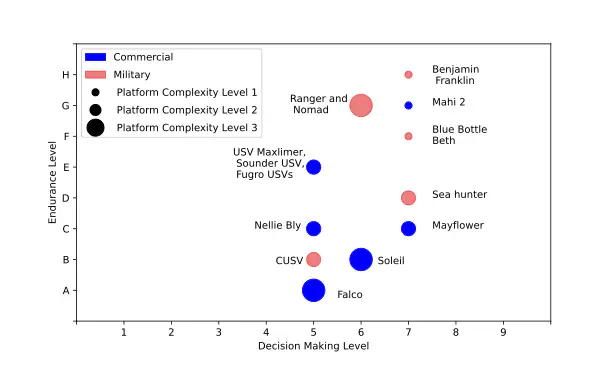Long-Term Voyage Decision Making for Crewless Platforms

Abstract
The desire to operate crewless platforms for months autonomously requires platforms that can sense their current state, maintain themselves, and perform long-term mission planning tasks to optimize their effectiveness as they degrade. How these long-term tasks are currently organized, exe- cuted, and regulated on human-crewed vessels is unexplored compared to more immediate navigation and hazard avoidance. This paper presents a series of inter-related explorations of the issues of longer- term mission planning in a fully autonomous framework. Based on the current state-of-the-art, a new three-component ranking scale for crewless platforms is proposed. Semi-structured interviews with retired military crews and commercial mariners were used to identify what planning tasks crews were currently carrying out. At the end of the interview process, themes from all interviews were reviewed, and an affinity diagram was created from the themes. The interviews revealed a surprising diversity in approaches, especially for tasks beyond machinery health assessment. Complementing this bottom-up analysis, a top-down analysis via a modified STAMP/STPA framework identifies critical information paths and control structures surrounding these tasks. By integrating the results of these two comple- mentary analyses, gaps in our current ability to achieve long-term autonomous operations are identified. Three proposed demonstration cases are developed to help develop approaches to fill these gaps.